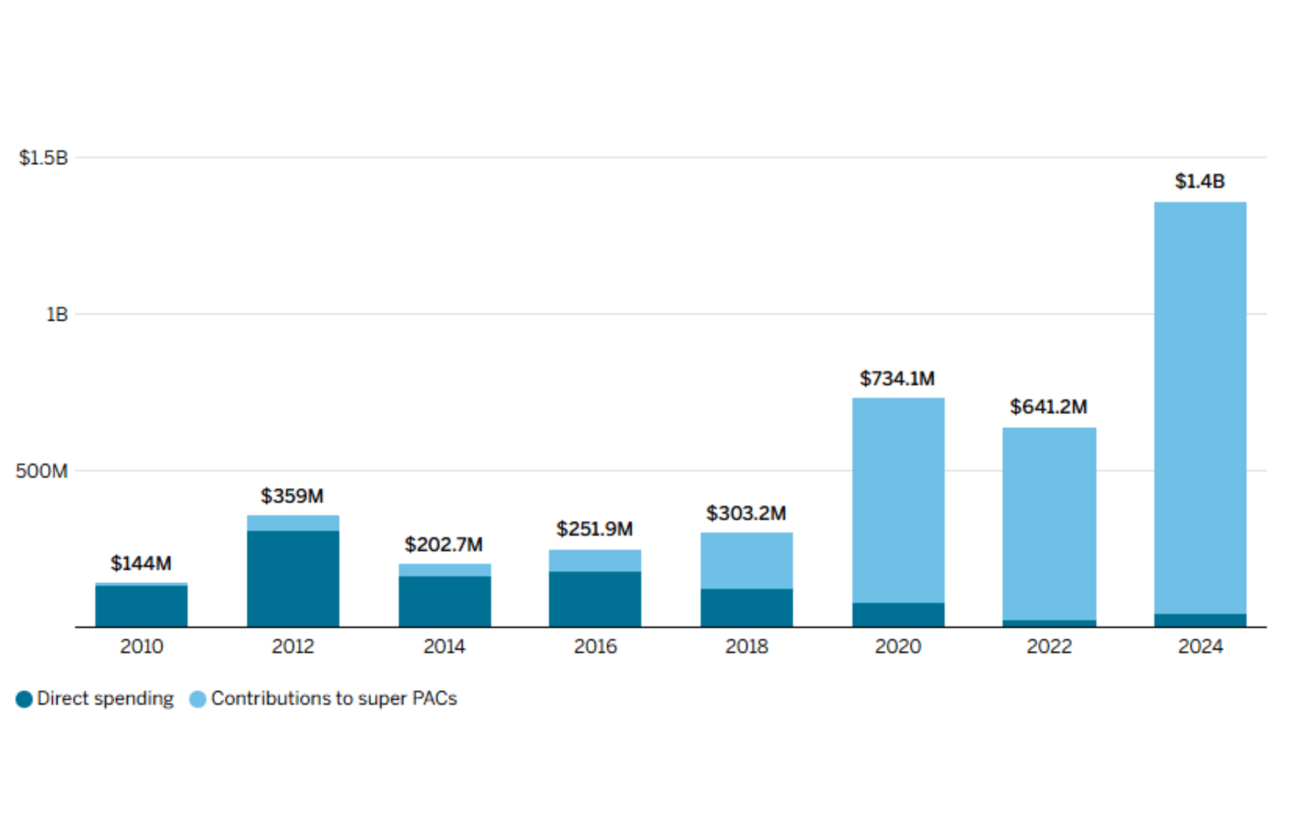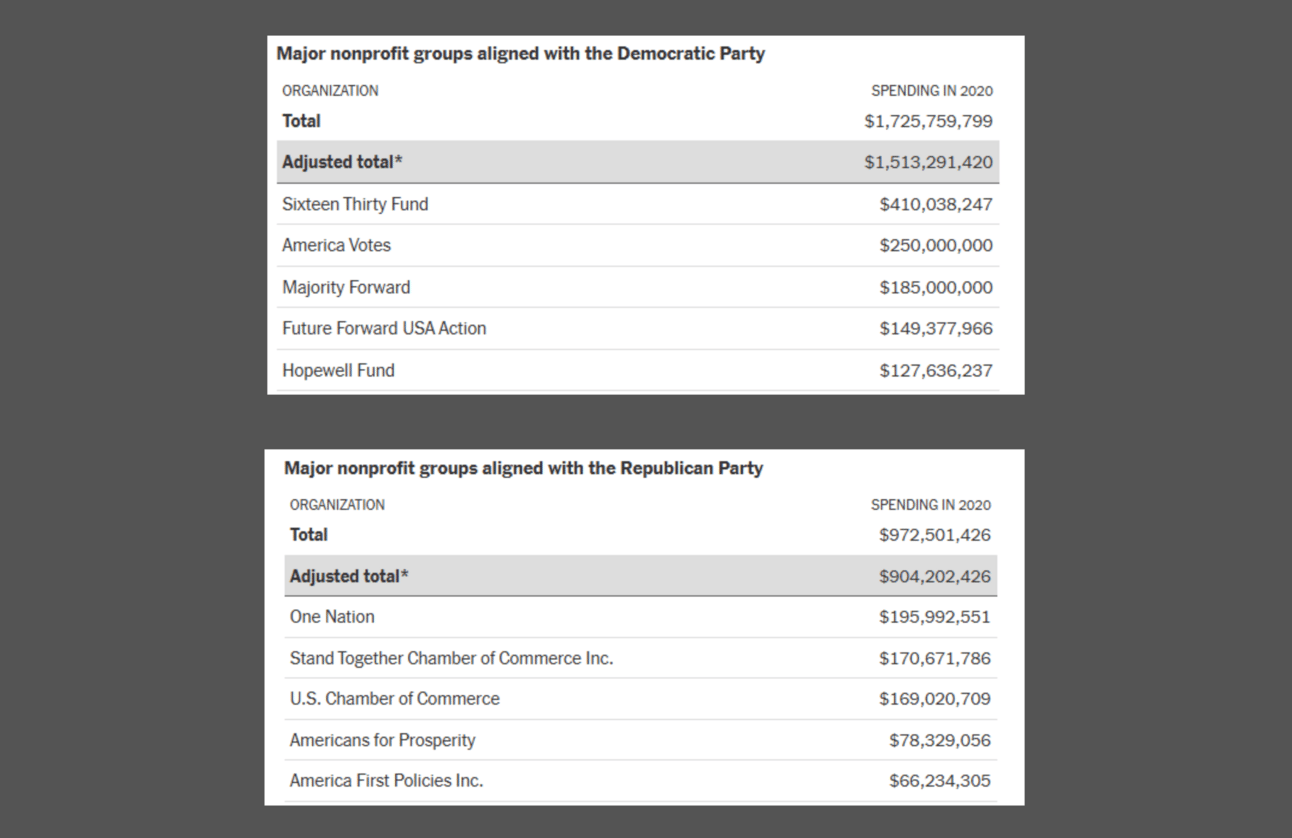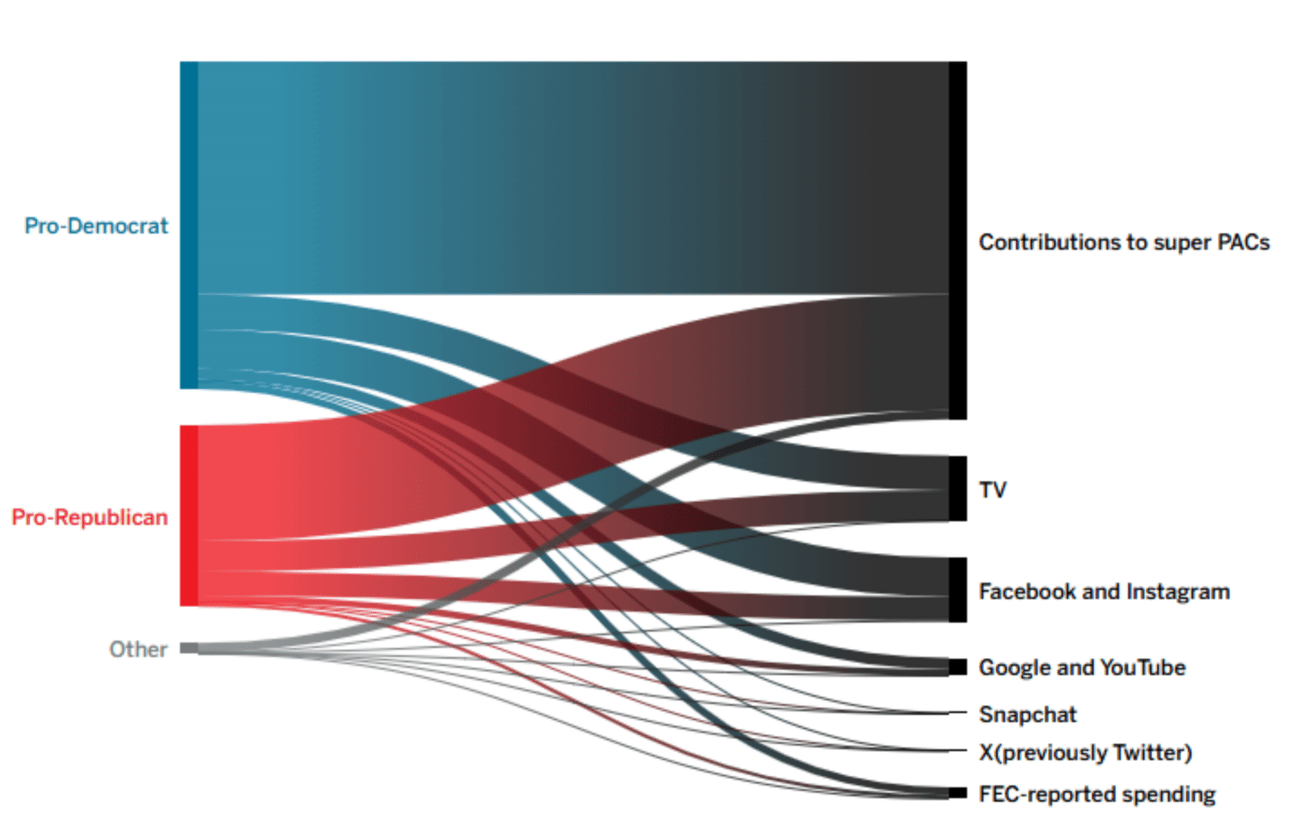- The Money Trails
- Posts
- How NGOs Became America's Dark Money Laundering Machine
How NGOs Became America's Dark Money Laundering Machine
The story of how charitable giving became political warfare

 |  |  |
What’s in This Week’s Issue…
Good morning. When you hear the word “nonprofit,” you probably imagine charities helping the poor, funding research, or doing humanitarian work.
But behind the charity galas and feel-good missions, America’s nonprofit sector has quietly become one of the most powerful engines of political influence and dark money in the country.
So this week…
🏆 The Big Play: How nonprofits became the dark money machine of American politics
💪 The Power Move: How to Run a Dark Money Filter on Everything You See
💵 Follow the Money: Did the U.S. really destroy Iran’s nuclear facilities?
-GEN
🏆 The Big Play
The biggest money power story of the week.
How Nonprofits Became America’s Darkest Political Weapon

Dark Money Groups’ Direct Spending vs Contributions Reported to the FEC
For most people, the nonprofit world feels distant. It’s a parallel universe of charities, foundations, and community organizations, seemingly above politics, and seemingly about doing good.
But in reality, the American nonprofit sector has evolved into one of the most effective political and financial influence machines in the country.
And the reason is simple: Political Loopholes.
So, how did we get here?
1. The Political Loophole No One Closed
It all started with a Supreme Court decision: Citizens United in 2010.
This ruling changed the rules of political money forever. Overnight, corporations and nonprofits could spend unlimited amounts on politics, with little or no donor disclosure.
And this gave rise to a new player in American elections: The 501(c)(4) “social welfare organization”.
These nonprofits didn’t have to reveal their donors. They could fund issue ads, voter campaigns, and even pass cash to Super PACs.
And they did all that aggressively.
A billionaire, corporation, or interest group donates millions to a nonprofit.
The nonprofit isn’t legally required to disclose its donors.
The nonprofit then spends that money on political ads, voter campaigns, ballot measures, or passes it to Super PACs that do the dirty work.
By 2019, political spending by dark money groups reached over $2 billion.
And because donors remain hidden, voters never know who’s really behind the ads they see, the bills getting passed, or the narratives flooding social media.
But this isn’t just about elections.

2. The Business of Influence: Lobbying, Think Tanks, and Revolving Doors
Once the election season ends, these nonprofits evolve from campaign machines into influence factories.
This is where money turns into laws, narratives, and policy outcomes.
Nonprofits become think tanks, research publishers, media engines, and lobbying machines, all without triggering the same disclosure rules that apply to traditional political entities.
Their playbook looks like this:
Fund a “nonpartisan” research paper to support your policy goal
Push the findings through media outlets and advocacy groups
Use lobbying agents funded by the same pool of donors to pressure lawmakers
Place former government insiders on your nonprofit’s board to maintain access
From the National Rifle Association (NRA) on the right, to the Sixteen Thirty Fund on the left, and the Judicial Crisis Network somewhere in between, this influence infrastructure spans the political spectrum.
The NRA took this to scale:
→ It split operations across a 501(c)(3) educational arm, a 501(c)(4) lobbying wing, and a PAC, each playing a different role in public perception and private pressure.
→ Since 2010, it has spent over $46 million on lobbying alone, while much of its donor base remained hidden.
What ties all these examples together isn’t ideology.
It’s operational design: a system where nonprofits aren’t just political actors. They’re policy architects, narrative shapers, and legal shields for the money that moves them.
And that’s not all.

3. The System Built to Not Get Caught
You’d think this scale of abuse would trigger crackdowns.
It hasn’t.
The IRS, which is supposed to police political activity by nonprofits, has been gutted:
Enforcement staff and funding have been cut by about 30% since 2010.
Political backlash after the Tea Party scandal made audits “radioactive.
Between 2010 and 2015, the IRS audited just 26 politically active nonprofits. Almost none since then.
And no nonprofit, left, right, or center, has lost tax-exempt status for political activity in nearly a decade.
The scandals keep piling up:
→ The Trump Foundation shut down after a lawsuit exposed illegal self-dealing.
→ The NRA got sued for financial misconduct and lavish spending on executives.
→ The Red Cross raised nearly $500 million for Haiti disaster relief and built just six homes.
This isn’t about bad actors slipping through. It’s about a system designed to let them through.
Because in a political landscape where both sides use the same playbook, no one’s motivated to close the loophole that keeps their own dark money flowing.
💪 The Power Moves
Playbook for understanding the game of power.
How to Run a Dark Money Filter on Everything You See

Dark Money by Party Supported in 2024
The danger with political nonprofits isn’t that they exist. It’s that they control the narrative long before the public knows a fight is happening.
By the time you see a campaign ad, read an op-ed, or hear a think tank report quoted on TV, the money has already done its job.
So, here’s the filter:
The next time you see a political ad, a ballot initiative, or even a viral issue campaign, pause and ask:
→ Is this coming from a nonprofit, a coalition, or a “civic group”?
→ If yes, who’s on their board?
→ Who funds them?
→ What’s their real legislative goal?
Because almost every emotional push you see around elections, whether it’s about guns, taxes, climate, education, or healthcare, has a dark money backend.
And most of that backend lives inside a 501(c)(4), a trade association, or a donor-advised fund.
The Takeaway:
If you don’t learn to spot the financial scaffolding behind the messaging, you’ll keep mistaking PR for public will.
The goal isn’t to distrust every cause.
It’s to stop getting played by the ones built to manipulate you.
💵 Following the Money
Three of the wildest financial and corruption stories from around the world.

Trump drops the ‘F-bomb‘ when asked about Iran-Israel ceasefire
✨ Poll time!
Do you believe most major nonprofits in the U.S. serve the public good or private agendas? |


